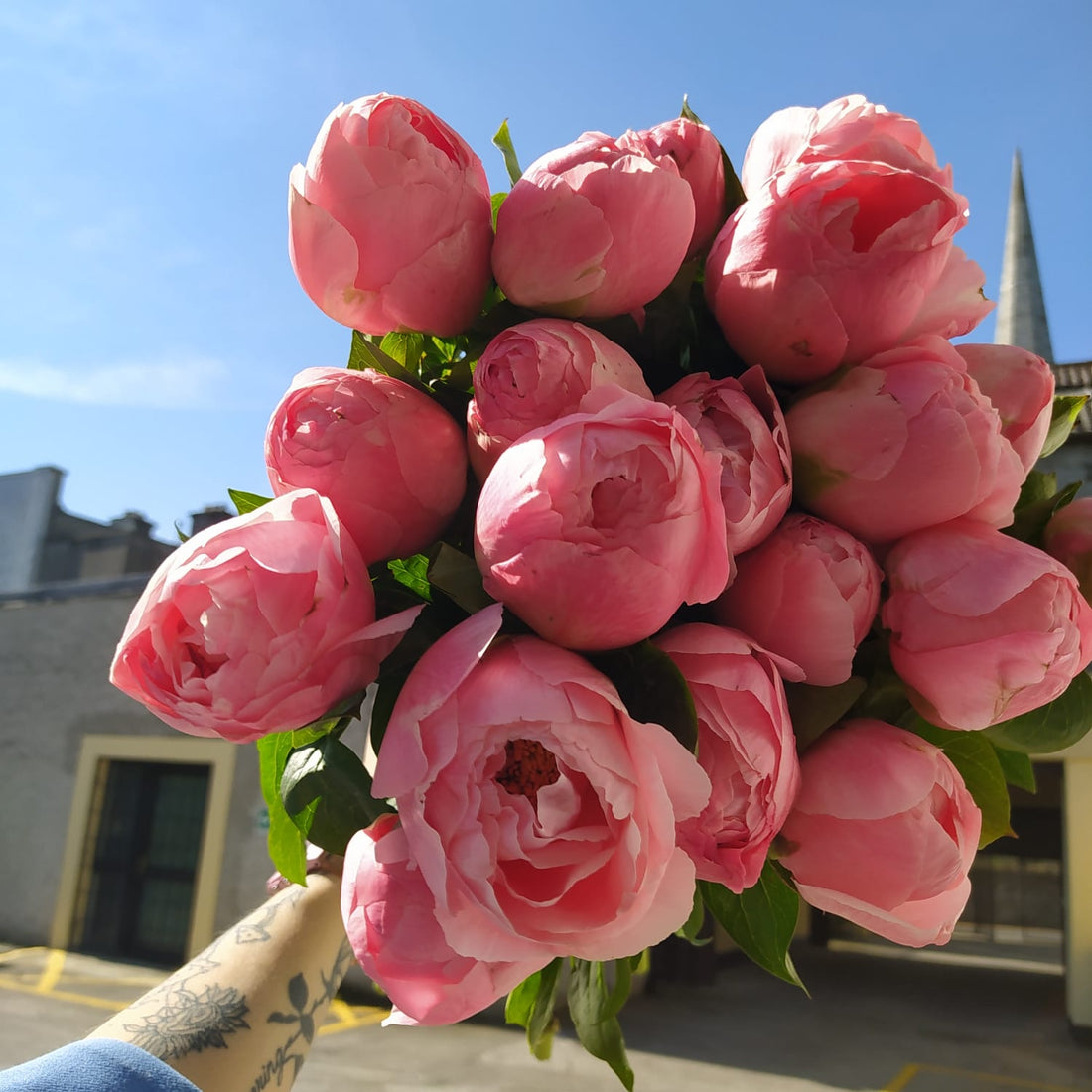Peonies ~ a favourite flower
Peonies are one of the most popular and beloved flowers in the world. They are known for their large, colourful blooms and are a favourite of gardeners and flower enthusiasts everywhere. Read on to learn more about the history, characteristics, and cultivation of peonies.
The history of Peonies ~
Peonies have a rich history that dates back to ancient times. They were first cultivated in China, where they were revered for their beauty and medicinal properties. In fact, the peony is considered the national flower of China and is a symbol of prosperity and good fortune.
Peonies were introduced to Europe in the 18th century and quickly became popular among European aristocrats. They were especially popular in France, where they were used in elaborate floral arrangements and as a symbol of the Bourbon monarchy.
Characteristics of Peonies ~
Peonies are known for their large, showy blooms, which come in a range of colours, including pink, white, red, and yellow. They are herbaceous perennials, meaning they die back to the ground each fall and emerge in the spring.
There are two main types of peonies: herbaceous and tree. Herbaceous peonies are the most common and grow to a height of 2-4 feet. Tree peonies are woody shrubs that can grow up to 10 feet tall and have larger blooms than herbaceous peonies.
Peonies are also known for their fragrant blooms, which can fill a room with their sweet scent. The fragrance of peonies is often compared to roses, but it has its own unique character that sets it apart.
Cultivation of Peonies ~
Peonies are relatively easy to grow and care for, making them a popular choice for gardeners of all skill levels. They prefer well-draining soil and full sun, but can also tolerate partial shade.
Peonies should be planted in the fall, ideally in a location that receives at least 6 hours of direct sunlight per day. They should be planted in a hole that is twice the width of the root ball and at a depth of 2 inches below the soil surface.
Peonies require regular watering, especially during the first year after planting. They should be watered deeply once a week, or more often if the weather is hot and dry.
Peonies should be fertilized once a year, in early spring, with a balanced fertilizer such as a 10-10-10 formula. They should also be deadheaded after blooming to encourage more blooms the following year.
Peonies can be propagated by division, which should be done in the fall. The plant should be dug up and divided into smaller sections, each with at least one shoot and one root. The sections should be replanted immediately and watered well.
Fun facts about peonies
Ancient Origins ~ Peonies have been cultivated for over 2,000 years and are native to Asia, particularly China and Japan. They hold great cultural and symbolic significance in these countries.
Symbolism ~ Peonies are often associated with prosperity, honor, and beauty. In Chinese culture, they are known as the "king of flowers" and symbolize wealth and good fortune. They are also considered a symbol of romance and a happy marriage.
Longevity ~ Peonies are known for their longevity. Once established, they can thrive for decades, producing abundant blooms year after year. Some peony plants have been known to survive for over 100 years!
Flower Types ~ There are several different types of peonies, each with its own unique characteristics. The most common types include herbaceous peonies, tree peonies, and intersectional peonies (also known as Itoh peonies). Herbaceous peonies die back to the ground in winter, while tree peonies have woody stems that remain year-round.
Extensive Color Range ~ Peonies come in a wide array of colors, ranging from delicate pastels to vibrant reds and purples. Some popular colors include pink, white, coral, yellow, and even rare black peonies. The variety of colors makes them versatile for floral arrangements and garden design.
Fragrance ~ Many peonies emit a delightful fragrance, adding an extra sensory dimension to their beauty. The scent of peonies can vary from light and sweet to rich and spicy, depending on the variety. Some peony enthusiasts specifically seek out fragrant cultivars to enhance their gardens or cut flower bouquets.
Peony Festivals ~ Peonies are so beloved that they are celebrated in various festivals around the world. In Luoyang, China, the Peony Festival is a major event, showcasing thousands of peony varieties in full bloom. The festival attracts visitors from far and wide who come to admire the stunning displays.
Medicinal Uses ~ Peonies have been traditionally used in Chinese medicine for their healing properties. The root of the peony plant, known as Bai Shao, is believed to have anti-inflammatory, antispasmodic, and pain-relieving properties. It is often used to treat conditions such as menstrual disorders, muscle cramps, and liver ailments.
National and State Flowers ~ Peonies hold significant status in several countries and states. As mentioned earlier, the peony is the national flower of China. Similarly, Indiana in the United States designated the peony as its state flower in 1957, representing beauty, prosperity, and the state's agricultural heritage.
Peony Festivals ~ In addition to the Peony Festival in Luoyang, China, there are other notable peony festivals worldwide. For example, the Peony Festival in Salem, Oregon, USA, showcases thousands of blooming peonies and attracts visitors from across the country.
Peonies continue to amaze us with their beauty, cultural significance, and enduring appeal. Whether you appreciate peonies for their stunning blooms, enchanting fragrance, or symbolic meanings, peonies continue to captivate people around the globe.








